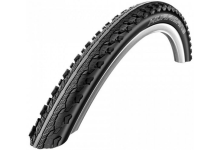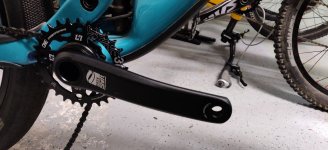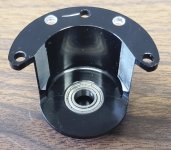I just received a new toy. For testing purposes only.
Turnigy SK8 6374-130Kv
My plan is to NOT use the extra power potential, which might over stress the chain. Rather, I plan to run a 12T sprocket. I'm hoping the motor will produce more Torque at a lower RPM. With the larger sprocket the tension in the chain should be the same. I'm hoping this will run a bit smoother and quieter. We will see if the extra weight is worth it.
935 gm vs 781 gm for the D5035 Orange motor, an increase of 154 gm.
130 Kv vs 125 Kv for the orange motor. I'm not sure if the 130Kv will be accurate, or if the motor will be happy spinning 33% slower than the orange motor. (I may end up wishing for 100Kv)
Rated for 65 Amps vs 45 on the orange motor.
49mohm vs 90mohm on the orange motor. I'm not sure what to make of this...
Overall length increases by 1cm. Stator length increases from 35.6 mm to 45.6mm, a 28% increase. I would expect this to be a good indicator of Torque and Power potential.
I need to change out the connectors and wait for the 12 and 13 tooth sprockets to arrive.
Turnigy SK8 6374-130Kv
My plan is to NOT use the extra power potential, which might over stress the chain. Rather, I plan to run a 12T sprocket. I'm hoping the motor will produce more Torque at a lower RPM. With the larger sprocket the tension in the chain should be the same. I'm hoping this will run a bit smoother and quieter. We will see if the extra weight is worth it.
935 gm vs 781 gm for the D5035 Orange motor, an increase of 154 gm.
130 Kv vs 125 Kv for the orange motor. I'm not sure if the 130Kv will be accurate, or if the motor will be happy spinning 33% slower than the orange motor. (I may end up wishing for 100Kv)
Rated for 65 Amps vs 45 on the orange motor.
49mohm vs 90mohm on the orange motor. I'm not sure what to make of this...
Overall length increases by 1cm. Stator length increases from 35.6 mm to 45.6mm, a 28% increase. I would expect this to be a good indicator of Torque and Power potential.
I need to change out the connectors and wait for the 12 and 13 tooth sprockets to arrive.





